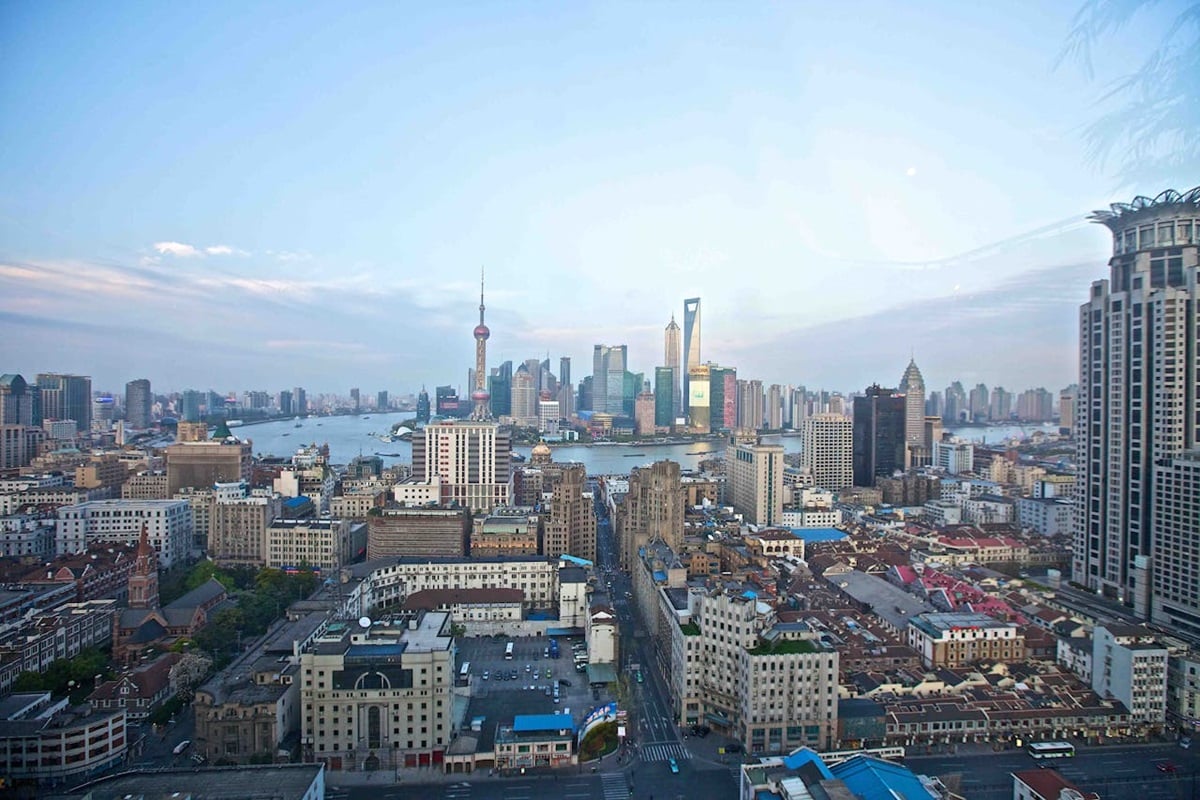The World Bank warns that the growth rate of the Chinese economic system, which is currently the second largest in the world, is likely to continue on a downward trajectory next year.

Analysts at the mentioned financial institution, which is headquartered in Washington, argue that the measures to stimulate economic growth announced by Beijing last month will not be a factor in canceling the slowdown tendency. It is worth noting that the specified measures have become the driving force behind the increase in Chinese stock indexes.
The report, which was published by the World Bank on Tuesday, October 8, contains a forecast that the Asian country’s economy will show growth of 4.3% next year. Also, this international financial institution expects that in 2024 the corresponding upward indicator will be 4.8%.
It is worth noting that the World Bank’s forecast for China’s economic growth for the current year has improved. The version of the vision of the relevant prospects, which was published by the financial institution in April, provided that the mentioned indicator would increase by 4.5% in 2024. The World Bank has revised its forecast for the growth of the Chinese economy in the current year after Beijing announced the above-mentioned stimulus measures. This set of decisions by the authorities of the Asian country has increased the level of trust on the part of investors. Against the background of relevant news, growth indicators began to dominate the stock market, which nevertheless weakened over time, without becoming what can be described as a long-term tendency.
The World Bank’s forecast for the prospects of the increase of the world’s second-largest economy next year has not changed after Beijing announced stimulus measures that are mainly aimed at monetary policy. This means that the financial institution rather does not assess the specified actions of the Asian country’s authorities as a source of long-term positive momentum.
Aaditya Mattoo, East Asia and Pacific chief economist at the World Bank said during a conversation with media representatives on Tuesday that the financial dimension of the stimulus measures remains undefined, which complicates projections. According to the expert, the main question now is whether the mentioned measures will actually be able to offset consumers’ concerns about lower salaries and decline of income from real estate, fears related to the risks of losing their jobs, worries about the likelihood of diseases and an anxious perception of their own prospects in the context of aging.
The World Bank noted that currently many of the problems observed in the space of China’s economic system are associated with low levels of consumer spending. Also, in the relevant context, the financial institution drew attention to such negative circumstances as the weakness of the Asian real estate market. It is worth noting that there is a protracted crisis in this space, which is gradually transforming from a temporary difficult situation into a structural state of affairs containing pessimistic prospects. At the same time, the current system of circumstances does not mean that China’s real estate market is doomed. However, it is not yet known when the situation in this market will improve and what losses will be recorded by the time the fundamental downturn becomes a thing of the past and gives way to the tendency of growth.
Also, the World Bank, in the context of analyzing the condition of China’s economic system, mentioned such a problem as the aging of the Asian country’s population. A separate financial institution drew attention to the growing global tensions. Currently, the situation in the space of geopolitical relations is deteriorating, against which escalating risks are increasing, which may have different forms of existence, including economic ones. China has already faced restrictions on the supply of advanced chips and equipment needed to produce microcircuits of the appropriate category. Appropriate measures have been taken by Washington and supported by some of its allies. Limited opportunities in the chip manufacturing area in the context of the modern economy and the specifics of the current configuration of the technology sector, where microcircuits are a kind of basic element, are a serious problem. In the long term, this problem may have large-scale consequences for Beijing. At the same time, China is making efforts to develop a homegrown sector of chip production. It is worth noting separately that geopolitical tensions continue to be on an upward trajectory. The corresponding state of affairs means that a negative situation in the international arena can generate new challenges and difficulties. Against this background, the deterioration of economic prospects is natural.
James Sullivan, head of Asia-Pacific equity research at JPMorgan, noted last week during a conversation with media representatives that the stimulus measures announced by Beijing are aimed at supply and investment, and not at the problem of low consumer spending faced by China. According to the expert, currently, the most important question is whether the mentioned measures will have an impact only on supply or are also a source of changes in demand indicators. James Sullivan does not expect that in this case the momentum of the boost for consumer spending will be recorded.
Hui Shan, chief China economist at Goldman Sachs, said during a conversation with media representatives on Tuesday that the growth rate of the world’s second-largest economy next year will largely depend on the size of any additional stimulus package and the results of the presidential elections of the United States, which will be held next month. The financial institution of which this expert is an employee predicts that in 2025 the real increase in the gross domestic product (GDP) of the Asian country will be 4.3%.
Also, on Tuesday, Zheng Shanjie, the chairman of China’s National Development and Reform Commission, pledged to take additional measures to bolster the economy. In this context, such a decision as accelerating the issuance of bonds for local governments was noted separately. At the same time, the official did not make any statements about major new plans to stimulate the growth of the world’s second-largest economy.
It is worth noting that for a long period, Beijing has sought to avoid drastic and large-scale measures to boost the economic system. At the same time, the Chinese authorities failed to adhere to the approach of moderate activity in the relevant direction at some point due to significant challenges. The fact that Beijing has nevertheless announced large-scale, but still not the maximum possible measures to stimulate economic growth, is actual evidence that the leadership of the Asian country recognizes the problems and is ready to counteract the negative state of affairs. It is also worth noting that analysts have repeatedly stated that China should act more decisively. In this case, it implies measures to stimulate the upward dynamic of the economic situation in the Asian country.
The World Bank has repeatedly stated that Beijing will be able to accelerate economic growth through an approach involving bold policy measures. The financial institution also clarified that the mentioned measures should include stimulating competition, reforming education, and implementing infrastructure modernization projects.
Aaditya Mattoo, during a conversation with media representatives, said that the specified stimulus will not substitute deeper structural reforms, which, as the expert noted, China will need to ensure long-term economic growth. He also said that any boost from the stimulus measures would be welcomed by the rest of the region. In this context, the expert separately noted that Asia’s economic growth is still heavily dependent on China.
It is worth noting that the prospects of the mentioned region as a whole are positive. World Bank experts predict that in the current year, overall economic growth in East Asia, except China and the Pacific region will be recorded at 4.7%. They also expect that in 2025 the corresponding figure will increase to 4.9%. World Bank experts explain this forecast by the expected recovery in exports and improved financial conditions.
At the same time, the mentioned region needs additional domestic incentives to ensure economic growth. The corresponding need is because the pace of China’s upward dynamic economy is slowing down. Internal incentives minimize or even eliminate the negative impact of the specified tendency.
The World Bank report notes that for three decades, China’s economic growth has had a factor of positive impact on the situation in the neighboring countries, but now the corresponding momentum is weakening.
Currently, the economic state of affairs in the Asian country is difficult. In fact, China is still facing what can be described as an echo of the coronavirus pandemic. The economic system of the Asian country has not yet fully recovered after a difficult sanitary and epidemiological period, which temporarily slowed down or in some cases paralyzed many processes in the business environment and the manufacturing sector. The downturn turned out to be protracted and painful. Currently, the probability of Beijing achieving the 2024 economic growth target of about 5% is actually under threat. The lack of a full-fledged recovery after the coronavirus pandemic is largely due to weak domestic demand in the Asian country and the crisis in the local real estate market.
In the first half of 2024, China’s economy showed growth which amounted to 5% year-on-year. This result is consistent with the goals of the Government of the Asian country. At the same time, the mentioned positive dynamic contains a kind of nuance. China’s overall economic growth rate for the first half of 2024 is positive in terms of meeting Beijing’s goals, but between April and June, local GDP increased by 4.7%, which is the slowest pace since the first quarter of 2023.
In August, the Asian country’s consumer price index (CPI) rose 0.6% year-on-year. At the same time, the core CPI, which does not take into account food and energy prices, increased by 0.3% in China in the mentioned month.
Also, in September, a decrease in factory activity was recorded in the Asian country. The official manufacturing purchasing managers’ index last month was fixed at 49.8. It is worth noting that the reading PMI above 50 indicates growth. Figures below this mark signal a downward dynamic. It is also worth noting that the PMI in China has been declining for the fifth month in a row.
The industrial profits of the Asian country in August showed a drop of 17.8% compared to the result for the same period in 2023. It is worth noting that this decrease in the indicator is the most significant in more than a year.
Retail sales in China increased by 2.1% in August compared with the result for the same period in 2023.
With a high degree of probability, it will soon become known what the current economic situation in the Asian country is in terms of prospects. Beijing may face a massive crisis. At the same time, it is equally likely that the economic situation will show significant improvement as a result of scaling up and strengthening of stimulus measures. Despite numerous difficulties, China’s economy still continues to be on an upward trajectory. At the same time, in this case, growth is gradually becoming increasingly insufficient for a full recovery.









